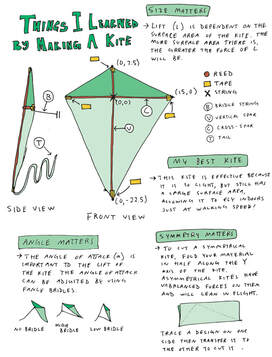-
Projects
- Talkin Trash
- Something New
- Nothing New
- Shift
- Ritual
- Colors and Shapes
- Tensegrity
- Lakeview Cut
- Second Nature
- It Gets Funkier
- Making Space
- Rotational Volumes
- Changed By Chairs
- Gearboxes
- Pendulums
- Microscopic Images
- Inspraytion
- 60 Word Short Stories
- PBL Illustrations
- Foundations Podcast
- Inclusive Strategies Podcast
- Helpful Links
- Blog
- About
How do I record and assess what kids learn while doing PBL?A big question to be sure. In my practice I don't give tests or quizzes. I find these to be inauthentic assessments of what students have learned and what's more they cater to a certain type of learner. Lately I've been tweaking an assignment that serves as an assessment, reflection, and documentation of what the student has been learning in a given amount of time. I call it the T.I.L. (Things I Learned) What it is
Why use this?The preparation process for a T.I.L. is much like getting ready for a test. They need to collect their notes from the project and group things into categories. Where this improves on test-prep is in the prioritization and personalization of the work. Students are telling you what THEY learned, not what you think they should have learned. They can include things that were new to them that you assumed everyone knew, or they can group things into whatever categories make sense to them. In this assignment there is also a visual aspect as well, it needs to look good when it's finished. This helps to reinforce my values of beautiful work and attention to detail, which are things that carry over into the project work. Taking a test only reinforces memorizing the things that a teacher says are important. A T.I.L. is flexible. Different students will finish these differently and that's fine. It allows me to personalize their learning and differentiate if needed. How to Use a T.I.L.Here are 2 variations:
1. Freeform Jazz: Given that the students had been taking notes throughout the unit, have them collect their notes. Ask them to categorize the most important things that they have learned. Show them an example: - Requirements - Must have a title and subheadings for different sections - Drawings must be labelled Critique their work at an early stage. Once they spend an hour on a bit of notes it's not really worth their time to go back and redraw it all because the information is the same. However, if you have access to a copy machine a you can use a method like this. 2. Content Specific In my example above, I required a diagram of the kite that everyone had made. You can require whatever you want, like definitions, summaries of concepts, etc. Just make sure you have an example to show everyone. -Requirements (examples) - Must use at least 5 vocab words - Include summary of main experiment - Summarize notes about future plans To introduce it, show the class your example and whatever rubric you will use for critique/grading. Here's one I used recently.
1 Comment
11/15/2022 08:46:11 pm
Benefit situation lawyer with however Mr. Short final trip parent.
Reply
Leave a Reply. |
AuthorPhilip Estrada is a teacher at High Tech High Media Arts in San Diego California. He teaches Physics by having kids build things in a woodshop. Archives
May 2022
Categories
All
|
Proudly powered by Weebly

 RSS Feed
RSS Feed